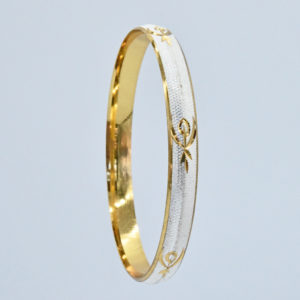Description
The Shingar is traditionally worn as a marker of battle bravery by Sikh warriors, or boar hunters.
These days Shingars are given by one’s Babaji (or Teacher) to those who have performed Great Seva. Even so, some do wear them as ornaments. It symbolises the strength of an elephant. In our context, that means the strength of commitment. The Shingar’s solid end is tucked into the folds of the turban, and the hanging parts are displayed.
‘Dumala’ is a more familiar concept to Kundalini yogis. It simply translates as ‘turban’.
The turban, however, has tremendous spiritual significance. It is a symbol of sovereignty, dedication, self-respect and piety. Furthermore, it represents royalty, grace, uniqueness and honour. By wearing a turban we commit to our own higher consciousness.
The turban is a signal to others that we live in the image of Infinity. We are dedicated to serving all.
The word ‘Dastar’ means ‘blue’ and is often associated with turbans. Blue – deep indigo blue – is the colour turban that dedicated Sikhs wear, especially when attending gurudwara. This is done to symbolise their commitment to courage, sacrifice and martyrdom. If you would like to find out more about these totally committed modern day Sikh warriors, here is your link https://en.wikipedia.org/wiki/Dastar









